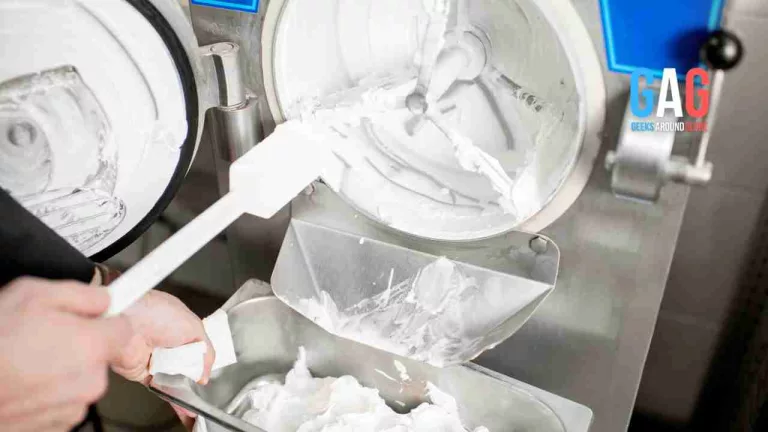Beer is one of the classic choices if you’re enjoying an alcoholic beverage. Nearly 31 percent of alcohol drinkers in the United States choose beer over wine, whiskey, and other spirits.
The US has a strong history with the brewing industry. It’s home to behemoths like Anheuser-Busch, Miller, Coors, and hundreds of microbreweries plying their trades.
Whether you’re a religious beer drinker or want to start crafting beer of your own, following trends in the beer industry is crucial. Upgrades in brewing technology allow for increased efficiency. Following what consumers want makes marketing craft beers a breeze.
Fortunately, you’ve discovered this eye-opening guide to the beer industry trends to watch in 2023 for your health and growing interest and craft beers. Continue reading to understand the science of beer better today!
Consumers Seeking Value
A massive change in the beer industry to monitor is the change in consumer behavior. Inflation is out of control, driving consumers to find better value in the products they purchase. The brewing industry is no different; consumers are looking for beer sold in bulk with higher alcohol levels.
Major brands are finding ways to increase customer value to overcome inflation. It’s expected that many consumers will explore beer options that provide the most value for the dollar. Beers with more alcohol provide a tremendous buzz for less money.
The best craft beers are pushing 9 percent alcohol, which is nearly double most light beers in the US. It’s worth paying more for better quality and higher alcohol content. This shift to high alcohol content redefines the best values within the brewing industry for consumers.
Focus on Specific Styles
Another trend to watch in the beer industry is the shift toward specific styles by breweries in the US. Manufacturers are facing more competition than ever for premium spots on the shelves at grocery stores. Many breweries and grocery stores seek to eliminate these brands selling slower.
Look for these stores to identify their core brands and stick with them. Times are hard financially, and stores want to roll with beer options that sell quickly and generate a profit.
The fact is that the beer industry is littered with copycat beer options. There are only so many IPAs and stouts that one person can try in a lifetime. Expect smaller breweries to narrow what they make and find ways to differentiate them.
Marketing and packaging beers differently is an excellent start. Small changes attract attention. It’s also critical for overcoming ingredient shortages since there’s less market competition from copycat beers. Working with 22nd century group is an excellent way t source your ingredients and master the science of beer.
Carbon Dioxide Shortages
Supply chains worldwide have struggled since the COVID-19 pandemic, but many people are unaware of the carbon dioxide shortages. The negative of this issue is that it will result in fewer beers and higher prices in the coming months. The bright side is that the science of beer will push forward from necessity.
Brewers are hunting for solutions to the need for more gas supply for their brewing processes. The best breweries harness beer industry trends to capture their own carbon dioxide and use it during bottling. Capturing and reusing carbon dioxide promotes sustainability and improves beer technology.
Spunding is another new trend with breweries looking to overcome the carbon dioxide shortage. It’s the process of trapping carbon dioxide naturally during the bottling process. These changes help the bottom line while benefiting the environment.
Growth of Local Beers
Listen to the news, and you’ll hear about several global conflicts. These conflicts might strain international relations, but they allow local breweries to prosper in these areas. Russian and Ukraine are famous for wheat exportations, and wheat shortages are resulting in breweries looking elsewhere for crucial ingredients.
It’s beneficial for local farmers with the necessary ingredients to produce beer. The circumstances are allowing breweries to work with local suppliers to meet demand.
Scientists are also springing into action to modify crops to become more durable. These crops will reduce reliance on wheat and other ingredients from overseas. The boost to the science of beer and the chance to go local with your brewing methods is a win for all parties.
Beer Merchandise is Growing
Many drinkers take fierce pride and loyalty toward the beer they enjoy most. Combine this pride with a spike in online shopping due to the pandemic, and many beer drinkers have loaded up on their favorite beer merchandise.
Expect more companies in the beer industry to take advantage of these consumers. Marketing and selling merchandise online is a steady form of revenue that acts as free marketing. Breweries are willing to take more risks as the beer merch industry takes off.
The new ideas don’t stop with the merchandise. Several craft breweries are also selling variety packs to consumers. These packs allow consumers to try several types of beer to determine their favorites.
Taprooms Soar
Taprooms are also expected to become social gathering places for friends and families. These taprooms meet the needs of everyone involved, and they’re filled with delicious beer. Creating a unique taproom experience is critical to keep customers returning for more.
An extraordinary experience allows consumers to justify spending money at your brewery. Consider adding vintage arcade games or an indoor golfing experience. These perks will add value to the experience of drinking at your establishment.
Other breweries are focusing on recreation. Consider adding sports options to keep your customers happy. It’s an excellent way to differentiate your brewery and craft beers.
Keep Tabs on the Beer Industry Today
Like baseball, football, and apple pie, drinking beer is an American pastime. Tracking the beer industry is critical if you’re a happy consumer or an aspiring brewery owner.
Expect tap rooms to gain prominence, and look for craft beers to start dying off. The brewing industry is also pushing the boundaries of the science of beer to solve the shortage of carbon dioxide.
Are you looking for more illuminating and captivating content? Explore more of our technology and business blog posts for keen insights today!







